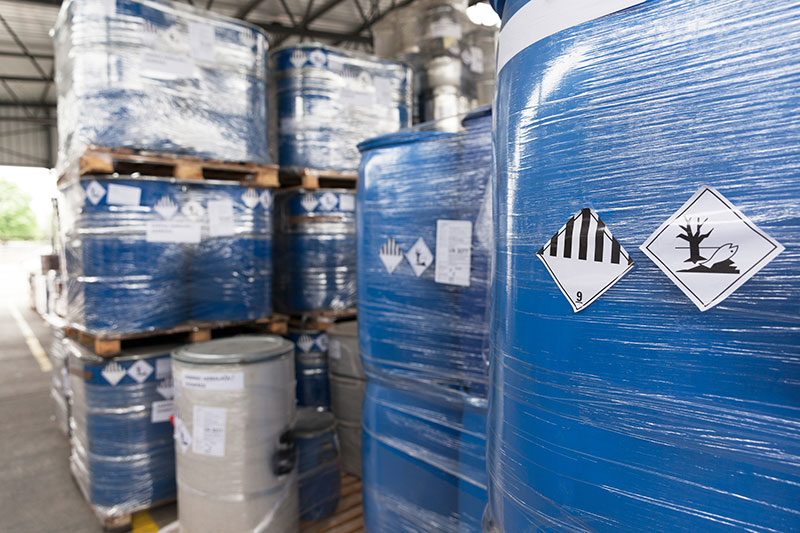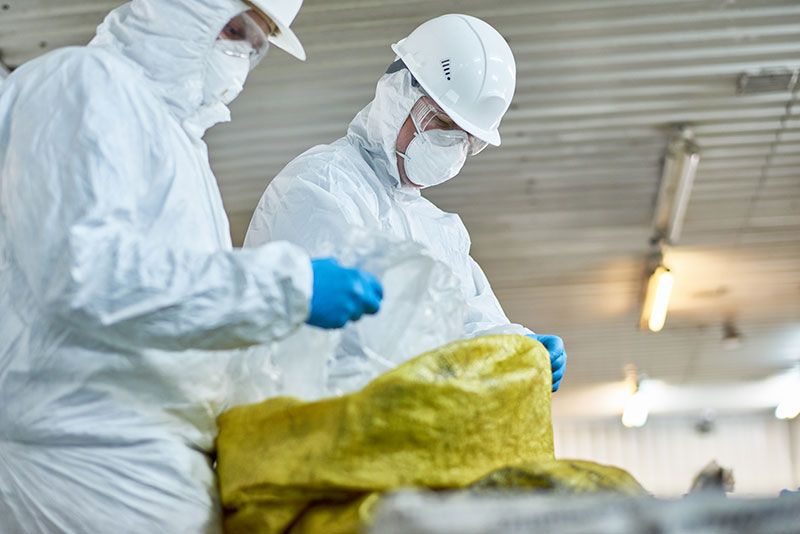Hazardous Waste Management: Challenges & Compliance
Hazardous waste management is a critical component of environmental sustainability and regulatory compliance. Each year, vast amounts of hazardous waste require rigorous and strategic handling. Delving into the challenges and compliance measures that are essential for managing these dangers effectively, we explore key statistics and regulations, alongside the roles of pivotal associations.
Dive deeper into the complexities of hazardous waste management as we explore the transport of over 3 billion tons of dangerous materials each year, the precise science behind waste assessment, and cutting-edge waste minimization strategies. Discover the challenges and technological limitations of current treatment methods and learn about the pressing issue of illegal dumping that costs U.S. cities billions annually. With a focus on both the environmental impact and human safety, this blog provides valuable insights for both students and professionals looking to enhance their understanding and impact in the field of environmental sustainability.

Transportation of Hazardous Waste
Annually, the United States oversees the movement of over 3 billion tons of regulated hazardous materials, including explosive, poisonous, corrosive, flammable, and radioactive substances. This vast undertaking not only highlights the scale of hazardous waste management but also the critical need for stringent transport safety measures.
Of the total hazardous materials managed, approximately 35 million tons are categorized specifically as hazardous waste. Intriguingly, the average American household contributes around 30 pounds to this figure each year, demonstrating the widespread nature of this issue.
Despite the dangers posed by such materials, the transport system maintains a remarkable safety record. The Research and Special Programs Administration (RSPA) reports that 99.995 percent of these shipments occur without incident, showcasing the effectiveness of rigorous regulatory frameworks and compliance protocols in ensuring the safe transit of hazardous materials. These efforts are essential for protecting public health and maintaining environmental integrity in the face of ongoing industrial and residential waste production.
Become a leader in sustainable waste management. Enroll in NREPSM’s industry-leading environmental certifications today!
Waste Assessment and Classification
Accurate assessment and classification are pivotal in managing the 35 million tons of hazardous waste generated annually in the United States. This process ensures that waste is appropriately identified, handled, and processed in accordance with both safety standards and environmental regulations. Under the Resource Conservation and Recovery Act (RCRA), waste must be systematically tested to determine its composition and potential hazards. This classification then dictates the suitable treatment and disposal methods, ensuring compliance with federal and state regulations.
Effective classification is crucial not only for safety but also for minimizing environmental impact. Misclassification can lead to inappropriate handling, increasing the risk of contamination and accidents. As such, technicians and environmental scientists are rigorously trained to apply precise methodologies in waste analysis, supported by advanced chemical testing techniques. This structured approach is essential for the sustainable management of hazardous substances, contributing to safer waste practices and better environmental outcomes.

Waste Minimization
Waste minimization remains a cornerstone of sustainable hazardous waste management, focusing on reducing the volume and toxicity of waste at its source. In 2022, significant strides were made in this area, with 1,759 facilities—representing 8% of all facilities that reported to the Toxics Release Inventory (TRI)—implementing a combined total of 3,589 new source reduction activities. These initiatives reflect a proactive approach to environmental stewardship, aiming to lessen the burden on waste treatment and disposal infrastructures and reduce the potential for environmental harm.
The efforts encompass a variety of strategies, including process modifications, materials substitution, improved operation and maintenance protocols, and technological advancements. Each activity is designed not only to cut down on waste generation but also to enhance efficiency and reduce the use of hazardous materials in production processes. This commitment to source reduction underlines the ongoing shift towards more sustainable industrial practices, significantly contributing to the broader goals of reducing environmental footprints and promoting public health safety.
Limitations in Treatment
Despite advances in technology, the treatment of hazardous waste still faces significant limitations that can hinder the effectiveness of environmental protection efforts. While modern treatment facilities are equipped to handle a wide range of hazardous substances, certain wastes pose unique challenges due to their complex chemical nature or the sheer volume produced. For instance, some industrial by-products are resistant to conventional treatment methods like incineration or chemical neutralization, requiring more sophisticated and often more expensive solutions.
Additionally, the treatment processes themselves can generate secondary wastes that may require further management. This not only complicates the disposal process but also adds to the overall environmental burden. The logistical challenges of transporting and treating large volumes of hazardous waste safely and efficiently further complicate these efforts.
These limitations underscore the importance of ongoing research and development in waste treatment technologies. Improving these technologies is critical for enhancing their efficiency, reducing associated costs, and minimizing residual waste, all of which are essential for achieving better environmental outcomes.
Illegal Dumping
Illegal dumping remains a significant environmental and economic issue, with cities across the U.S. spending approximately $11 billion annually on cleanup efforts. This unlawful practice involves the improper disposal of waste—ranging from household trash to industrial by-products—outside of regulated waste management systems. Such activities not only mar the landscape and degrade natural habitats but also pose serious risks to public health and safety by contaminating soil and water sources with hazardous substances.
The challenge of combating illegal dumping is compounded by its widespread occurrence in both urban and rural areas. Enforcement can be difficult due to the need for constant surveillance and the often remote locations of dumping sites. Moreover, the costs associated with cleaning up dumped waste strain municipal budgets, diverting resources from other critical services.
To address this pervasive problem, many regions are intensifying enforcement, implementing stiffer penalties, and increasing public awareness campaigns to educate citizens about the legal and environmental consequences of illegal dumping. Community engagement programs and the provision of more accessible legal disposal options are also part of comprehensive strategies to curb this damaging behavior.
Worker and Workplace Safety Concerns
Managing hazardous waste not only poses environmental risks but also significant health and safety challenges for workers involved in its handling, treatment, and disposal. The hazardous nature of these materials can expose workers to toxic chemicals, leading to acute and chronic health issues unless strict safety protocols are followed. Industries must comply with Occupational Safety and Health Administration (OSHA) guidelines, which include the provision of personal protective equipment (PPE), proper training on handling procedures, and emergency response plans.
Despite these regulations, the potential for accidents remains, especially when procedures are not strictly adhered to or when the complexity of waste complicates its management. For example, accidents can occur during the transportation of hazardous materials, during treatment processes involving high temperatures and corrosive chemicals, or as a result of prolonged exposure to toxic substances.
Continuous training and vigilant enforcement of safety standards are essential to mitigate these risks. Furthermore, promoting a safety culture within workplaces and conducting regular audits of safety procedures can help identify potential hazards before they result in incidents, ensuring the well-being of workers and the safe handling of hazardous materials.
Public Relations and Opposition
The management of hazardous waste often faces public scrutiny and opposition, particularly when it involves the siting of treatment facilities or disposal sites. Public concerns generally revolve around potential health risks and environmental impacts, which can lead to significant opposition from local communities. Effective public relations strategies are crucial for organizations to navigate these challenges successfully.
Engaging with the community early and transparently is key to gaining public trust and support. This involves clear communication about the safety measures in place, the environmental benefits of proper waste management, and the regulatory frameworks that guide these practices. Public meetings, informational sessions, and open houses can be effective ways for companies to present their plans and respond to community concerns directly.
Additionally, providing ongoing updates about the operations and the measures taken to mitigate risks can help maintain a positive relationship with the community. However, despite best efforts, opposition may persist, necessitating a continued commitment to dialogue and adaptation of plans to address public concerns. Organizations must balance operational needs with community interests to foster a cooperative environment and ensure the smooth progression of hazardous waste management projects.
As we continue to confront the challenges of hazardous waste management, the importance of informed, strategic approaches cannot be overstated. We encourage you to stay engaged and informed with the latest practices and advancements in the field. For more insights, resources, and training opportunities, contact the National Registry of Environmental Professionals® (NREPSM) and discover how you can contribute to making a significant environmental impact through professional excellence and sustainable practices.
